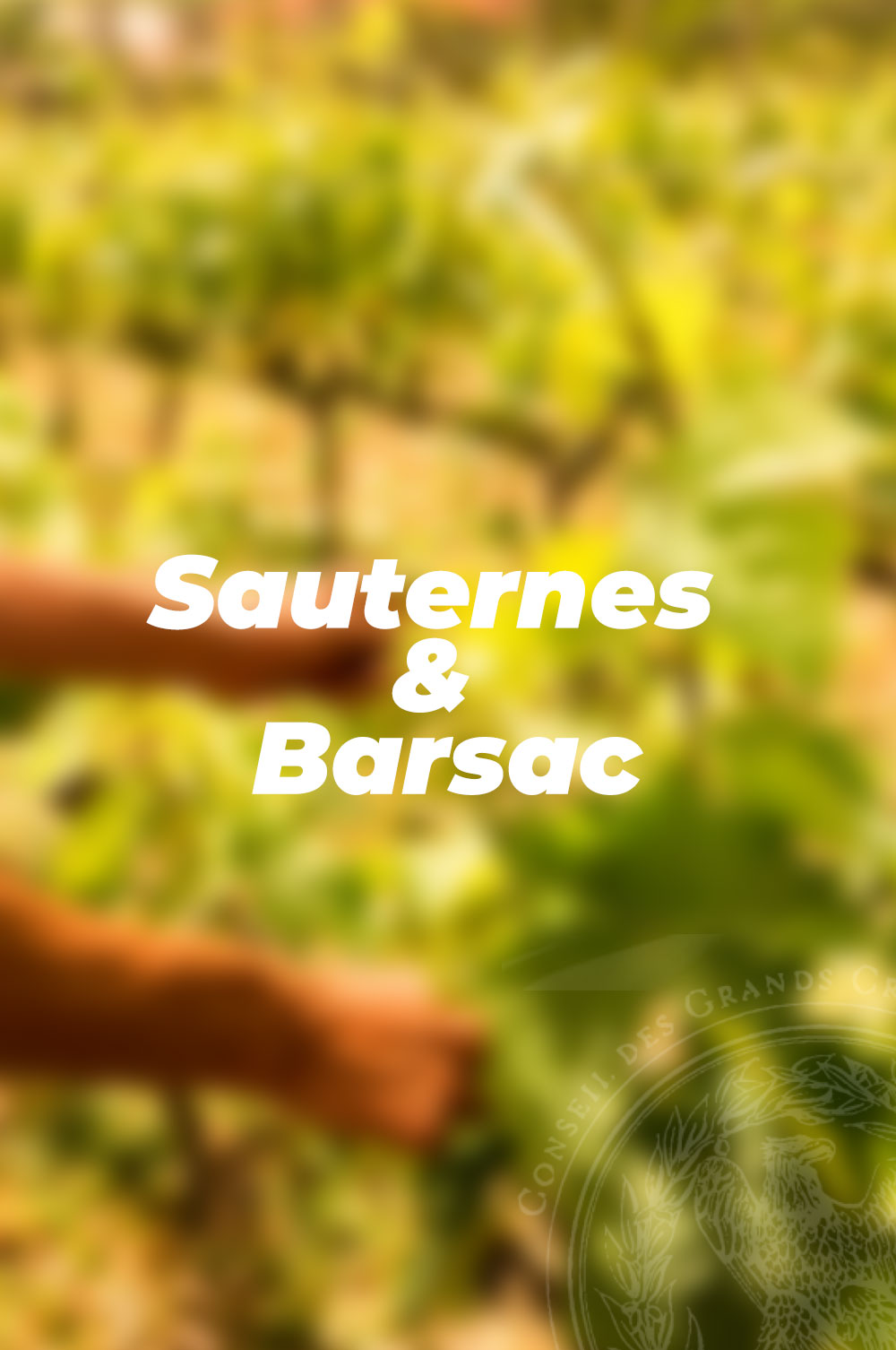
Sauternes and Barsac: Two Terroirs destined for the production of true elixirs.
In vineyards with incredibly low yields, in a capricious microclimate responsible for the famous noble rot, the luscious wines of Sauternes and Barsac are born.
DOC Sauternes and DOC Barsac: Two Twin Designations
Classified DOC in 1936, the wines of the Sauternes region are produced 40 km above Bordeaux, between the left bank of the Garonne River and the vast Landes forest, covering the cities of Sauternes, Bommes, Fargues, Preignac, and Barsac, all benefiting from the DOC Sauternes designation. However, in Barsac, producers can choose between DOC Sauternes or DOC Barsac.
But both designations consist of luscious white wines, with a minimum alcohol content of 13°, originating from musts with a minimum of 221 g of natural sugar per liter of grape harvest with “noble rot” from the Sémillon, Sauvignon, and Muscadelle grape varieties, with an authorized minimum yield of 25 hl/ha; twins, separated by the Ciron River, they are distinguished solely by the geology of their terroirs.
Botrytis Cinerea – The Magic of Noble Rot
This wines benefit from the magical climate of the region, conducive to the development of botrytis cinerea, which causes the evaporation of water from the grapes and an extraordinary concentration of must.
As ripening is highly irregular, harvesting is manual and very time-consuming and is carried out by “selections”, i.e., several times. There are years when botrytis does not develop, making it impossible to produce a true luscious wine. Others when rain destroys the entire harvest, thus condemning its production. The high prices of these wines reflect this constant risk and labor costs.
Meticulous and Passionate Winemaking
Winemaking is meticulous, done by grape variety, with three gentle and slow pressings respecting the grape, followed by fermentation carried out by natural yeasts generally for two to four weeks. Finally, the aging of Grand Cru wines is long, favoring the encounter of the wine with oak, which gives it unique characteristics.
Extraordinary Pairings
Sauternes and Barsac wines can be enjoyed alone or in classic pairings, such as foie gras, cheese plates, or desserts.
However, nowadays, perhaps inspired by exotic culinary traditions that have been combining spices and sugars for centuries, Chefs and Sommeliers find extraordinary alliances that reflect the richness and complexity of these elixirs.
As a result, whether with seafood, fish with sauces, an oyster ravioli with curry, duck with orange, or even a roasted chicken, try it out.
Here are two suggestions: a Grand Cru Classé from Barsac and a Château d’Yquem from Sauternes.
This article is based on “Sauternes and Barsac : The Classified Great Growths“, by Claude Peyroutet.

